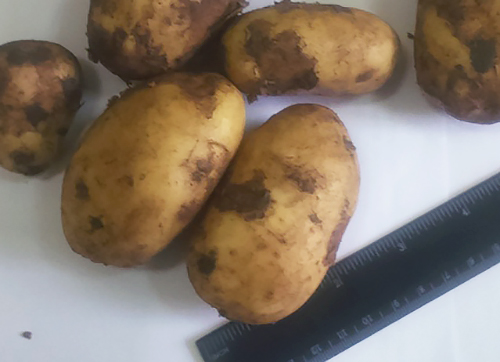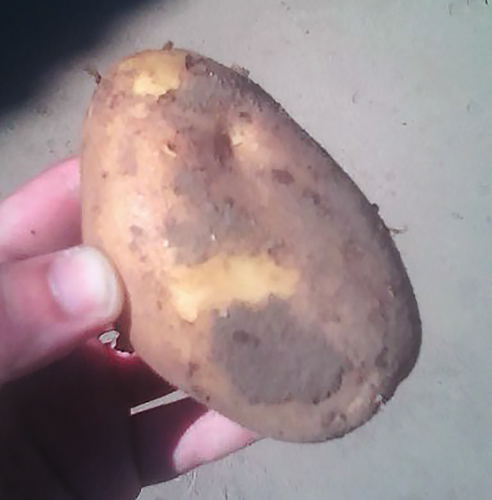Potato variety Nadezhda
Nadezhda is a mid-season potato variety (Solanum tuberosum) of Russian selection. Bred by specialists of the A. G. Lorkh All-Union Potato Research Institute. Obtained by crossing the KZ 1151 variety and the numbered hybrid 128-6. In 2009, it was included in the state register of plants of the Russian Federation. Approved for cultivation in two regions of the country: Central (Bryansk, Vladimir, Tula, Smolensk, Ivanovo, Moscow, Kaluga, Ryazan regions) and Ural (Orenburg, Kurgan, Chelyabinsk regions and the Republic of Bashkortostan). Great for processing into crispy potatoes. It is appreciated for its unpretentious care and good yield in various climatic conditions.
The time from the emergence of full shoots to ripening is 80-95 days.
The plant is an intermediate type, semi-erect. The leaves are small or medium, of an intermediate type, with medium wavy edges, green in color. The inner side of the corolla has a weak anthocyanin coloration, the proportion of blue is average.

In one nest of Nadezhda, about 6-9 medium to large potatoes are formed. The mass of commercial tubers is noted in the range of 96-162 grams. Tubers are elongated oval. The peel is slightly reticulate, light beige in color. The pulp is creamy. The eyes are small, shallow.
The marketable yield, according to the results of state tests of the variety, amounted to 192−348 c / ha, which is comparable to the standards Gingerbread man and Bronnitsky. The maximum amount of potatoes was harvested in the Ivanovo region - 416 centners of tubers were obtained per hectare of area, 180 centners / ha more results Lugovskoy... Marketability 82−96%. Keeping quality is good, but not outstanding - 93%.
Our hero has good taste. The tubers boil well, crack during cooking, but do not lose their shape. The pulp is very tender, slightly mealy, not watery, with a very pleasant taste. Potatoes are best suited for baking, frying, and mashed potatoes. But it is especially well suited for processing into chips and fries, and is also suitable for making dry mashed potatoes. And all this is due to the very high starch content - 18-20%. The minimum amount is noted at 13.9%.
The variety is relatively undemanding to the composition of the soil, it can grow in various climatic conditions. It shows itself especially well in the Central region, on fertile loose soils. In agricultural technology, plants are simple, do not require special care, except for the most standard measures - loosening the soil, hilling, treating pests and diseases, weeding, watering and feeding.

Hope is resistant to cancer, banded and wrinkled mosaics. According to the originator, it is moderately resistant to late blight pathogen in the tops and moderately resistant to tubers. Susceptible to aureus cyst nematode, requires high-quality prophylaxis.
This potato is appreciated by gardeners for its high stable yield, the ability of plants to adapt to different growing conditions, a good presentation of tubers, their rather early ripening, as well as excellent taste. Summer residents also distinguish the resistance of plants to a variety of diseases, making the variety suitable for organic farming without the use of "chemistry".
One of the advantages of Nadezhda is the high starch content in the pulp, which makes it suitable for processing into chips. And, of course, this affects the taste - it is very rich and pleasant.
Among the disadvantages can be distinguished susceptibility to the golden cyst nematode.This potato may not be the most productive of all known mid-season varieties, but it will certainly delight you with its stability.
In addition to the originator, the following companies are officially engaged in cultivation: CJSC Ozery in the Moscow region, LLC Agropak in St. Petersburg, LLC Element M and FSBEI VO RSAU-Moscow Agricultural Academy named after K.A. Timiryazeva in Moscow, LLC Suzdalagroprom in the Vladimir region.








